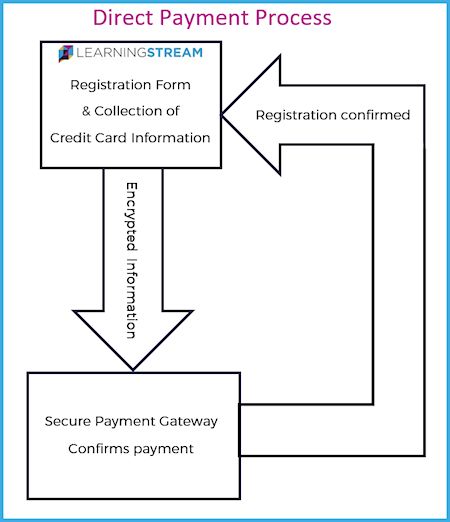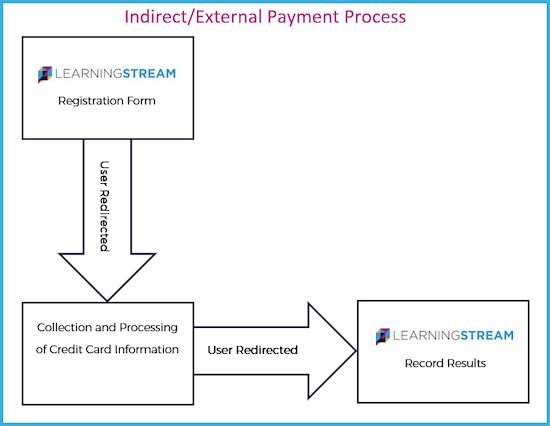Five facts: direct vs. indirect payment processors
When we write about payment processors in this space, we can imagine the eyes of readers glazing over and then their heads dropping into their tepid cappuccinos. It often  seems the nuts and bolts of payment processing are unnecessarily labyrinthine. But online payments play such an integral role in revenue-generating training organizations that it is important to revisit the topic.
seems the nuts and bolts of payment processing are unnecessarily labyrinthine. But online payments play such an integral role in revenue-generating training organizations that it is important to revisit the topic.
One of the most important aspects of payment processing is the difference between direct and indirect (external) payment gateways.
1. What “direct” means
With direct gateways, the customer (the registrant in Learning Stream’s case) remains within the registration software on a secure payment page to complete the process. The registrant is not confirmed for the class until payment is verified. Authorize.net, Stripe, and Payflow Pro are among many examples of direct gateways.
2. What “indirect” means
In the case of indirect/external payment processors, the registrant leaves the registration pages to complete payment. A basic PayPal account is the best example of this. When a person hits the “Submit Registration” button, they are redirected to PayPal to complete payment on the secure PayPal page. Other common examples of indirect/external gateways are Touchnet, Cashnet, and Elavon. (Processors can have both direct and indirect options.)
3. Security considerations
Both direct and indirect/external processes are secure because, wherever the payment submission form resides, it must adhere to Payment Card Industry (PCI) standards.
4. Why the direct option may be best
Registrants may find the direct payment process less confusing because they are submitting payment information on the same site where they register. Also, the registration won’t be confirmed and processed unless payment is confirmed by the payment gateway. Registration administrators don’t need to check another account to see if the payment went through.

5. Why the indirect option may be best
External processors like PayPal can benefit registration programs that only need to accept online payment occasionally. Therefore, paying ongoing fees for a payment gateway provider may not be cost effective. Additionally, some large organizations, such as universities and hospitals, have relationships with payment providers that go beyond online registration payment processing. Programs may be required to use that payment company.

If you have questions about direct or indirect, and which processor may be best for your program, we’ll help you explore your options. Meanwhile, here’s a list of Learning Stream’s payment processing partners, which includes a mix of direct and external options
